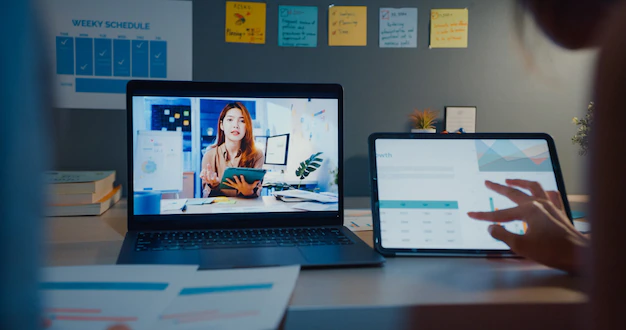Best 6 Ways To Infuse Discovery Learning Into Your eLearning Course Design

Here are the best 6 ways to infuse discovery learning into elearning course design. Each has a different way of learning. While textual learners would rather read instructions, visual learners prefer to watch a demo or instruction video. Others learn best by doing.
They want to experiment on their own and learn as they go. You’ll retain information better when you put it into practice, regardless of the educational method you like. Recall your first years of school.
Although the teacher’s lectures were ineffective, you probably still remember every experiment you ever carried out. This is due to the fact that discovery-based learning increases engagement and memory recall.
See: Designing an Effective Blended Learning Program in 5 Steps
6 Ways To Infuse Discovery Learning Into Your eLearning Course Design
1. Employ Open-ended Inquiries
Instead than spoon-feeding knowledge to online students, the goal is to get them to learn things on their own.
They are more likely to retain what they have learned if they find it out on their own.
Ask them open-ended queries as opposed to true-false, yes-or-no inquiries. Because you can’t pose a question and wait for an answer online, this could seem difficult.
You’re not actually in a classroom, after all. The alternative is to hold weekly “live sessions” during which everyone can communicate simultaneously by chat or teleconference.
In order to prepare them for each class, you can also give them a homework assignment. Offer a broad question to which they should provide a 100–200 word essay in response.
Starting an eLearning group is another another excellent option to ask open-ended questions. Publish a thought-provoking question every day to get their brains working so they may research the subject on their own.
2. Go From the Knowing to the Unknown
Start by introducing new topics that relate to previously examined ideas or concepts that online learners have already experienced.
They’ll feel more at ease if they begin on familiar ground before moving into new training terrain. For instance, they must master more complex customer service duties or abilities.
Start with a simulation that reviews the fundamentals, like active listening and communication techniques, to get them ready for the new ideas and to refresh their memories.
After that, move on to more complex topics and encourage students to independently access online training demos, branching scenarios, and tutorials.
3. Promote Introspection
Self-reflection is a key element of discovery learning so that online learners can assess their own cognitions and give the knowledge significance.
Utilize tales and examples from the actual world to encourage online learners to think about the subject. Including exams that require writing essays is another strategy for promoting self-reflection.
You may be concerned about how essay questions will function in an eLearning course because software is frequently used to grade assignments.
A human course coordinator can review them in between units if you give them as homework.
Online students benefit from these “essays” as well because they become aware of their own knowledge gaps.
They expand on the knowledge they already have and conduct research to find out more. They are so actively participating in the form of learning known as discovery.
4. Establish Context
By rote, classical education is effective. You’re expected to be able to recall specific details upon request. The risk with this knowledge is that it is frequently far away.
When we were young, we mastered algebra and the multiplication tables, but we had no idea what they were used for.
Adults frequently use times tables subconsciously when performing mental calculations. But, unless we are engineers, we hardly ever employ mathematics in daily life.
While creating an eLearning course, consider how your online students will apply the knowledge and design the lesson accordingly.
To answer the equation 1 + 2 = 3, for example, an engineering scenario will be more beneficial to online learners than a test question.
5. Establish Study Groups
For collaborative projects, the entire process of moving from the known to the unknown works well.
In groups, it’s common for some people to do all the work while others avoid it. Keeping track of all sessions will help you avoid this.
Put online students in groups or couples. Give them tasks they may do on social media or through group messaging. Each group is open to you as a moderator or administrator.
This allows you to grade based on participation after reviewing the conversation to see who participated and who didn’t.
As part of your eLearning course, you might also construct a built-in chat room or online forum.
6. Offer Criticism
You may have already realized that discovery learning requires active engagement in contrast to standard eLearning courses.
At the very least, screen-on supervision is necessary. You need an online instructor who online students may contact via phone, email, or in-class webcam since the human element is crucial.
Plan one-on-one meetings so the online instructor can answer their specific questions and provide feedback. It might be a chat, a video call, or an audio call.
Informing your online students of the online instructor’s “consultation hours” will enable them to reserve time slots in advance.
A peer-based mentorship program that promotes feedback and teamwork is a fantastic alternative.
Jerome Bruner, a psychologist, first “discovered” the concept of discovery learning in 1961, and it is still useful today.
To increase the real-world application of your eLearning course, there are many ways to add it.
As homework assignments in between modules, use open-ended questions. Encourage online students to build on their prior knowledge to enlarge and enhance their skill sets.
Provide context while encouraging online students to use eLearning Project Management software and apps for collaborative projects.
Recall that encouraging online learners to take the initiative and seek out information on their own is the key to effective discovery learning.







